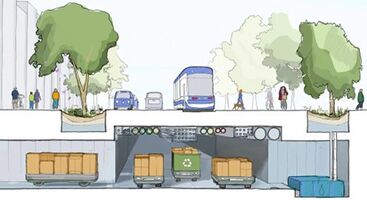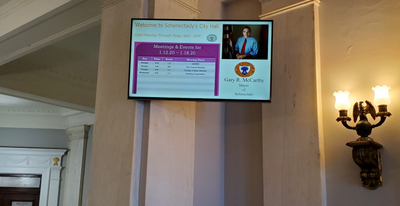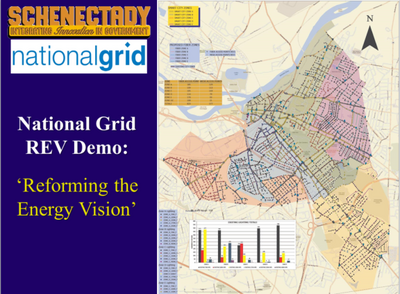Interfacing Smart Buildings with City Services and Infrastructure: Difference between revisions
No edit summary |
No edit summary |
||
| Line 96: | Line 96: | ||
<div style="margin-left:0.75in;margin-right:0in;"><span style="color:#000000;">Automated robotic deliveries to buildings are typically services that use robots to deliver various goods. These goods can include parcels, food, groceries, medicines, and other packages from the distribution center or shop directly to your doorstep or designated location within a building. The robots are usually small, self-driving vehicles, drones, or even droids designed to navigate sidewalks, streets, and hallways. In terms of apartment buildings or offices, there may be specific robots for indoor navigation to deliver goods within the building. These could include robots for room service in hotels, delivery in large offices, or food delivery in residential buildings.</span></div> | <div style="margin-left:0.75in;margin-right:0in;"><span style="color:#000000;">Automated robotic deliveries to buildings are typically services that use robots to deliver various goods. These goods can include parcels, food, groceries, medicines, and other packages from the distribution center or shop directly to your doorstep or designated location within a building. The robots are usually small, self-driving vehicles, drones, or even droids designed to navigate sidewalks, streets, and hallways. In terms of apartment buildings or offices, there may be specific robots for indoor navigation to deliver goods within the building. These could include robots for room service in hotels, delivery in large offices, or food delivery in residential buildings.</span></div> | ||
=== | ===Smart Water Conservation === | ||
<div style="margin-left:0.75in;margin-right:0in;"><span style="color:#000000;">Managing water resources is an important commitment of any community. Smart sensors can monitor leaks and are even used in some communities to help monitor vacant homes. These sensors can communicate in a variety of ways, including cell service, Wi-Fi, ZigBee, and LoRa. Smart sensors that detect leaks should be considered in any Smart building or City deployment, as they can prevent dangerous situations from arising in both commercial and residential areas. | <div style="margin-left:0.75in;margin-right:0in;"><span style="color:#000000;">Managing water resources is an important commitment of any community. Smart sensors can monitor leaks and are even used in some communities to help monitor vacant homes. These sensors can communicate in a variety of ways, including cell service, Wi-Fi, ZigBee, and LoRa. Smart sensors that detect leaks should be considered in any Smart building or City deployment, as they can prevent dangerous situations from arising in both commercial and residential areas. | ||
Revision as of 17:56, July 31, 2023
| Smart Buildings | |
|---|---|

| |
| Sectors | Smart Buildings |
| Contact | Heather Ipsen |
| Topics | |
- Authors
This section discusses some of the opportunities relative to an interface of the buildings and city services and infrastructure where utility companies, local governments, and property owners can partner to improve the built environment, and operational efficiency, save money, and conserve resources.
The first part outlines the benefits of good Buildings and City infrastructure interface and describes the connections of Smart Buildings to City Services and Infrastructure. The second section will outline recommended KPIs of the good interface of building with urban services. The third section identifies various elements of Building-connected City Services and Infrastructure and the final section provides a Case Study.
.
The benefits of good buildings and city infrastructure interface
The interface between a building and city infrastructure is beneficial to the successful functioning of a city, the livability of its urban spaces, and the sustainability of its built environment. A well-designed, good interface can have several benefits:
- Efficient Resource Management: Good building/city interfacing ensures optimal use of utilities like water, electricity, gas, etc. This results in less waste and better conservation of resources.
- Integrated Transportation: A well-planned interface allows for the smooth movement of people, goods, and services. It supports public transport, encourages walking and cycling, and reduces dependency on private vehicles, thus reducing traffic congestion and pollution.
- Accessibility: It ensures that city services and facilities are accessible to all residents, including those with disabilities.
- Improved Safety and Security: Good design can increase visibility and surveillance in public spaces, reducing crime and improving safety. It can also ensure better access for emergency services.
- Urban Sustainability: By facilitating efficient use of resources and reducing pollution, a well-planned building/city interface contributes to the sustainability of the city. It also allows for better integration of open and green spaces and can help in managing the impacts of climate change.
- Health and Wellness: Urban design can influence residents' physical activity levels and mental health. For instance, infrastructure that encourages walking or cycling can help combat obesity and related health issues. Meanwhile, easy access to parks and open spaces can contribute to mental well-being.
- Social Cohesion and Quality of Life: Good design can create inviting public spaces that encourage social interaction and build community cohesion. It can also improve the quality of life by ensuring access to amenities and reducing noise and air pollution.
- Adaptability: With good building/city interfacing, cities can be more resilient and adaptable to changes over time, whether they be population growth, technological advancements, or shifts in climate.
- Reduced Maintenance Costs: Good building/city interfacing can lead to better coordination between different infrastructural elements, which can reduce maintenance costs and improve the lifespan of city infrastructure.
By focusing on the interface between buildings and city infrastructure, municipalities and urban planners can create cities that are more livable, sustainable, resilient, and inclusive.
Buildings Connections to City Services and Infrastructure
Buildings connect to various city services and infrastructure in multiple ways, depending on the specific service in question. Both building owners and the City can enhance and improve upon the efficiency and delivery of those services by embracing the numerous technological advancements. that have been made by Smart Technology over the past few years. Here are a few key focus areas for cities looking to capitalize on the opportunity to adopt a new, smarter mode of operation through a good interface with buildings:
- Means of access by public or private transport and mobility: The street presence of the building typically gives the first impression. Well-integrated landscapes, open plazas, easy transportation drop-off and well-designed bicycle storage can provide pleasant and inviting building entries. Proximity and access to public transit systems like buses, trains, trams, or subways is a crucial aspects of city infrastructure.
- Green Infrastructure: In some cities, buildings might be connected to urban green spaces, which are designed to manage stormwater, reduce the heat island effect, increase biodiversity, and provide recreational spaces.
- Telecommunications: Buildings are connected to telecommunication networks through a combination of underground or above-ground cables and wireless connections. This includes internet, telephone, and cable TV services. Increasingly public information kiosks as well as security systems are becoming part of exterior building infrastructure.
- Emergency Services: Buildings need to be accessible to emergency services such as fire departments, medical emergency services, and law enforcement. While not a "connection" in the same way as utilities, access (such as roads, emergency access lanes, and so on) is a critical consideration.
- Energy systems Buildings are connected to the power grid through a series of power lines, transformers, and circuits, which often need to be accessible by utilities or municipal employees. In some cities, particularly in colder climates, buildings might be connected to district heating systems, where a central plant distributes heated water to multiple buildings in the area. The same concept applies to district cooling systems.
- Water Supply: Buildings are connected to the city's water supply through a network of underground pipes. These pipes carry potable water from water treatment plants or reservoirs to individual buildings.
- Sewerage System: Wastewater from buildings is carried away through another network of pipes, typically distinct from the water supply to wastewater treatment plants. Here, the wastewater is treated before it's returned to the environment.
- Electricity: The power is often generated at a distant location and is transmitted over long distances to urban areas.
- Natural Gas: Similar to water, buildings can be connected to natural gas supplies via underground pipelines. This gas is used for cooking, heating, and in some cases, power generation.
- Waste Disposal: Municipalities organize regular trash and recycling pickup. Buildings usually have designated areas for waste storage until it can be collected.
- District Heating/Cooling:An urban infrastructure that centralizes thermal energy supply for multiple buildings in a district. This system employs sensors and Internet of Things (IoT) devices to monitor real-time data, which is analyzed using machine learning and predictive analytics to optimize energy generation and distribution. The system may also use renewable energy, and waste heat sources, and integrate with the smart grid to interact with other energy systems.
The specific mix and extent of these connections can vary widely depending on the location, age, and type of the building, as well as local infrastructure and regulations.
The KPIs of interface of building with urban services
KPIs, or Key Performance Indicators, are specific, quantifiable measures used to track the performance or quality of various aspects of a system. In the context of evaluating the interface of a building with urban services, several KPIs may be relevant. The choice of KPIs would depend on the specific objectives of the stakeholders, but here are some general ones to consider:
- Accessibility: The extent to which the building is accessible from key urban services such as public transportation, healthcare facilities, educational institutions, etc. This can be measured using indicators such as walking distance or travel time.
- Integration with Public Transport: The level of ease for residents or visitors to use public transportation. This could be measured through indicators like the number of public transport stops within a certain radius, the frequency of services, or the number of different routes accessible.
- Energy Efficiency: The degree to which the building-related uses, such as exterior lighting uses energy efficiently, which is particularly relevant for urban sustainability. This can be measured using indicators such as energy use per square foot or the Energy Use Intensity (EUI).
- Water Efficiency: Similarly, water use per capita or per square foot could be used as KPIs to measure water efficiency.
- Waste Management: The effectiveness of the building's waste management can be evaluated using KPIs such as the recycling rate, waste generation per capita, or the percentage of waste that is diverted from landfills. The number of waste truck trips could also be an indication of waste management effectiveness.
- Safety and Security: KPIs could include the number of incidents reported, the presence of safety features (e.g., security cameras, alarms), or the response time of emergency services.
- Quality of Life: This could include a variety of KPIs, from noise levels to air quality, to access to green spaces, all contributing to the general well-being of residents or users.
- Smart Infrastructure Integration: The integration of buildings with urban services through IoT devices is increasingly important. KPIs might include the number of smart devices installed, the level of automation, or user satisfaction with these services.
- Economic Factors: The economic viability of the building, including indicators like rental or sale price per square foot, occupancy rate, or return on investment.
The choice of KPIs would depend on what the stakeholders want to prioritize and measure. The specific urban context and the building's intended use (residential, commercial, etc.) would also influence the selection of KPIs.
( In the web version clicking on the particular component of the diagram will take you to the relevant text section)
Building-Connected City Services and Infrastructure
Smart Exterior Lighting
Information kiosks
Location analytics
Digital Signage

Video Conference Equipment
Electric Vehicle Charging Stations

Robotic Deliveries
Smart Water Conservation
Other smart devices are also available to monitor the amounts and times when landscaping is being irrigated. These devices can help eliminate water waste, particularly in areas where water is at a premium or used on a large scale.
Onsite Wastewater Treatment and Recycling
In smart buildings, water can be used more than once as recycled water for certain applications, such as irrigation, toilet flushing and other greywater applications. By recycling water, valuable potable water drawn from exhausted aquifers and other sources can be reserved for immediate consumption by building occupants.
Stormwater (e.g. rainwater) can be harvested for greywater applications or irrigation. In fact, water use trends suggest that rainwater is increasingly being used as a substitute for potable water where it is deemed safe.
Wastewater recycling is a relatively new practice, but it has great potential since the availability of recycled wastewater does not depend on intermittent rainfall. Oftentimes, during drought periods, the demand for irrigation is the highest and the availability of scarce rainfall is at its lowest. The availability of recycled wastewater, on the other hand, is more predictable since the amount of wastewater is directly linked to the use of potable water.
There are new technologies that treat wastewater onsite (e.g. at the building level) rather than in centralized treatment plants. Stepping away from the old centralized model of treating and managing wastewater not only saves precious water resources but also saves communities significant amounts of money and reduces overall energy usage.Smart Waste [[1]]
- Smart Waste Bins: IoT-enabled waste bins can alert the waste management company when they're almost full. This optimizes the routes of garbage trucks and saves time, fuel, and reduces emissions. This technology can also help to avoid overflow, thus maintaining the cleanliness of the city.
- Automated Vacuum Waste Systems (AVAC): They use a network of underground pneumatic tubes to transport waste from buildings to a central collection point. Each type of waste (e.g., organic, recyclable, non-recyclable) has a separate tube, making it easy to sort and process. This method is not only efficient but also hygienic, as it avoids the need for traditional waste collection vehicles and reduces road traffic.
- AI-Driven Waste Management Platforms: These platforms use artificial intelligence to analyze and predict waste generation patterns, optimize waste collection routes, manage inventory, and much more. They can provide a real-time overview of the entire waste management infrastructure and operations, thereby increasing efficiency and cost-effectiveness.
Case study
National Grid / City of Schenectady REV Demonstration Project


Recommendations and Conclusion
| City | Utility |
Smart City Services
|
Grids
|
Smart City Communication Platform
|
Energy Storage
|
| Smart Street Lighting Technology | Weather Related Conditions
|
Business Models
|


